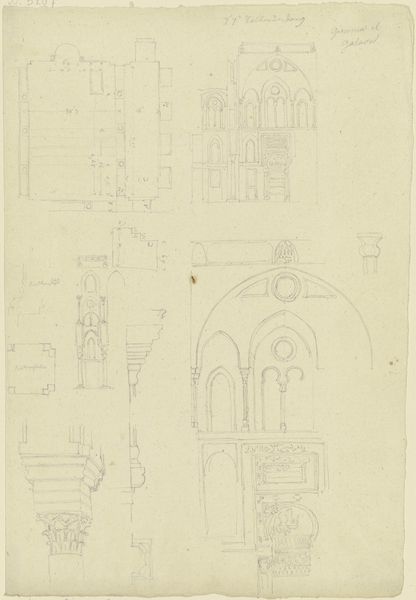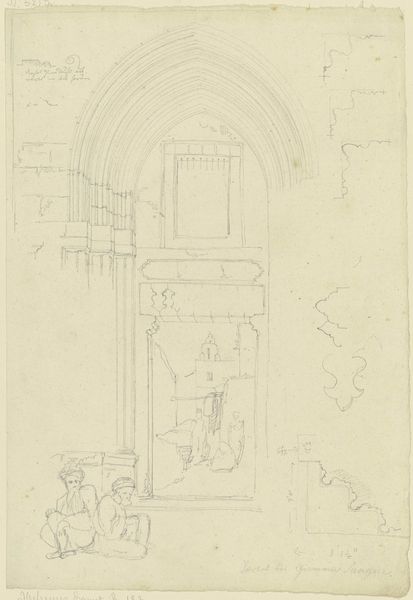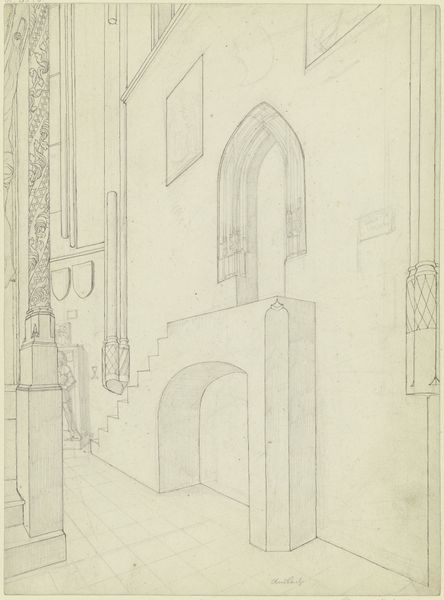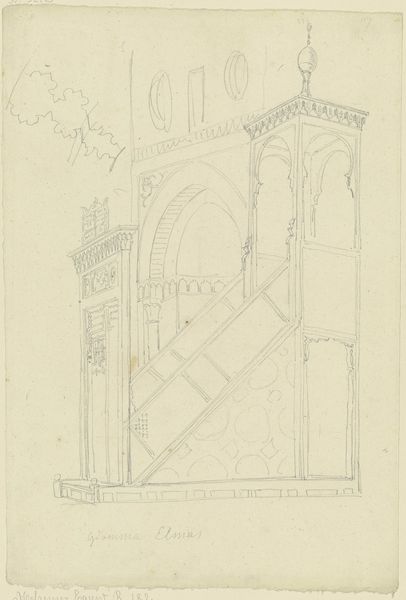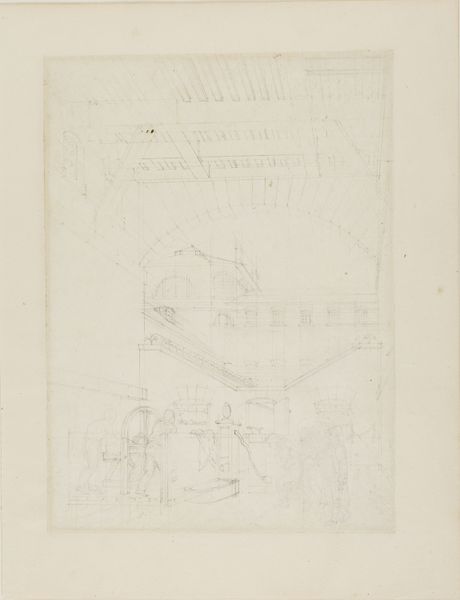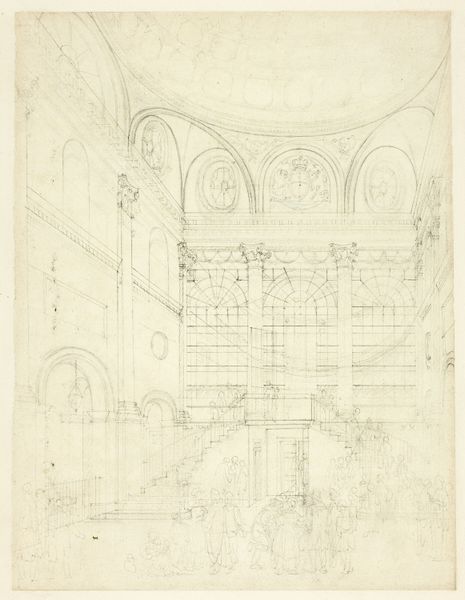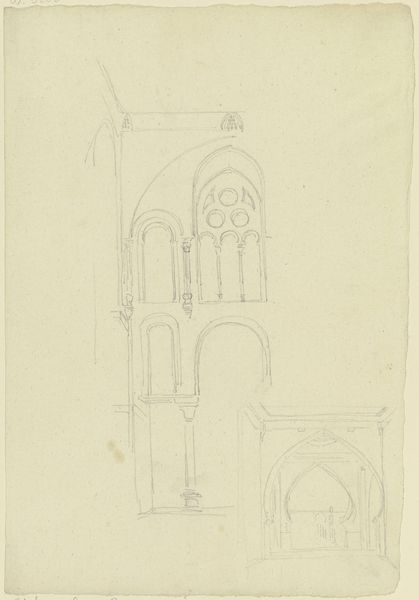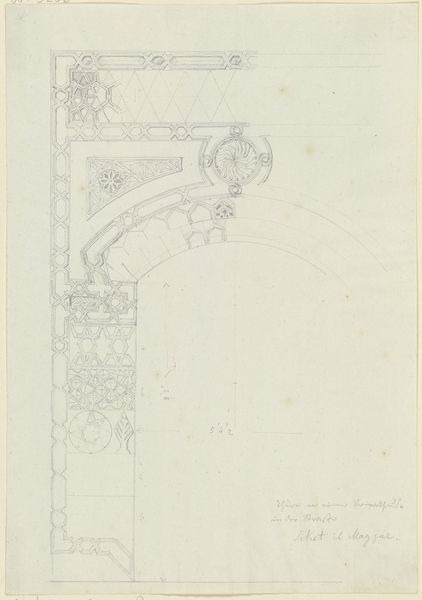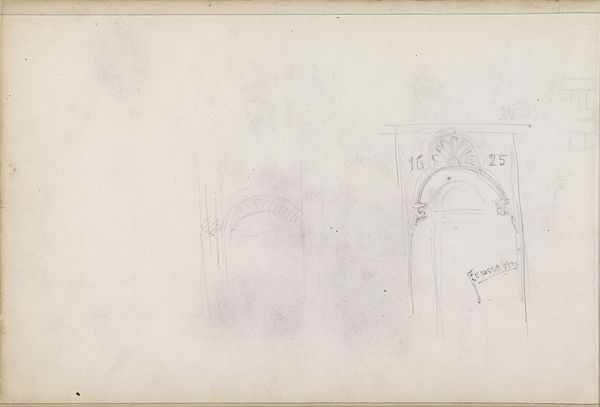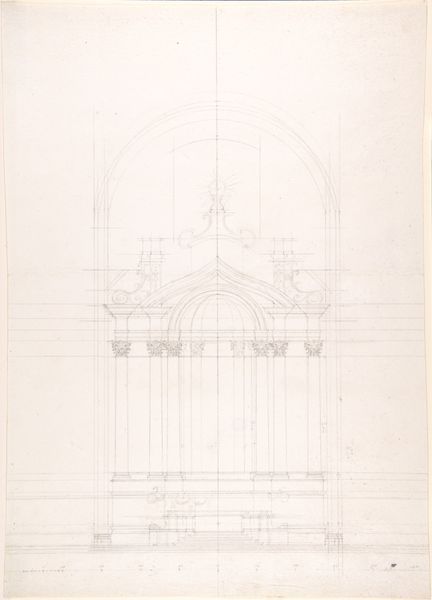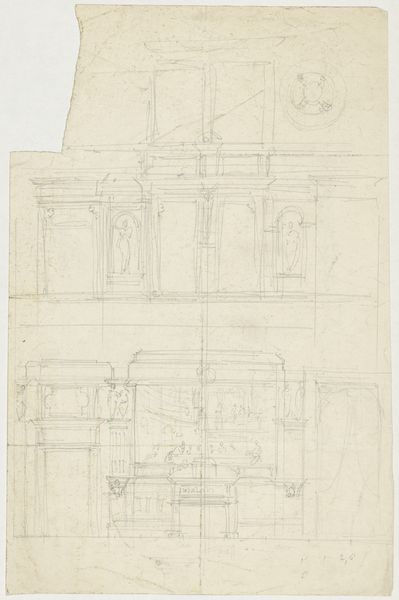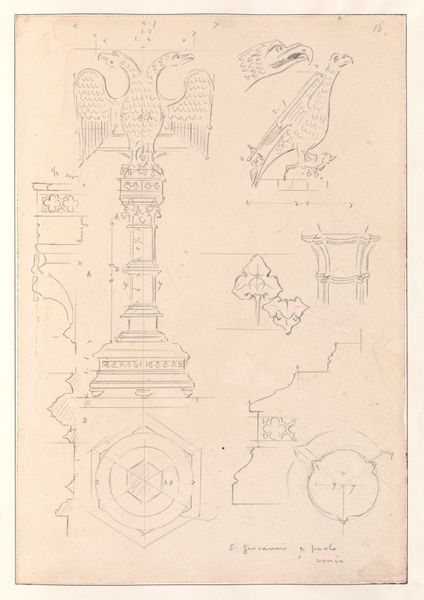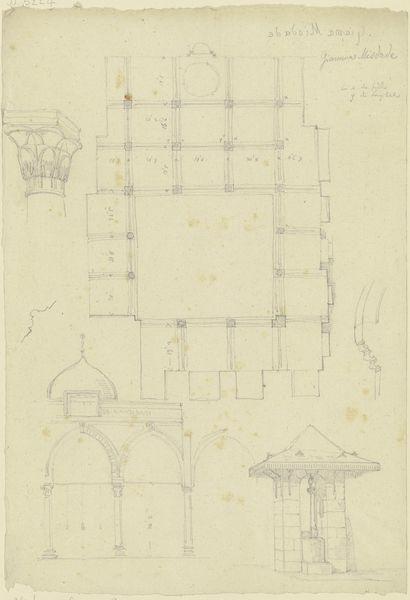
drawing, pencil, architecture
#
architectural sketch
#
drawing
#
neoclacissism
#
pencil
#
architecture drawing
#
academic-art
#
architecture
Copyright: Public Domain
Curator: Here we have "Slightly Arched Protiro," a pencil drawing created around 1829 by Friedrich Maximilian Hessemer. It resides here at the Städel Museum. Editor: Wow, it’s incredibly light, almost a whisper on paper. A ghost of a building. The archway gives it a sort of...elegant invitation. What do you think it might be? Curator: Hessemer was part of a wave of 19th-century architects deeply influenced by neoclassicism, but increasingly fascinated with ornamentation. This drawing serves as a detailed study, not just of form, but of decorative elements drawn, perhaps, from historical styles. It reflects the academic interests of the time. Editor: Academic alright, but almost a bit playful? The floral accents dance a little, and those arrow patterns near the doorway feel surprisingly modern somehow. Curator: Hessemer aimed to catalog, analyze, and reuse the architectural history for application within contemporary designs, showcasing historical knowledge. Think of this as a blueprint for potential inspiration and combination. The museum saw architectural drawing as part of this process for artists. Editor: So not just art, but research. And to think of all the labor hours creating and researching this detailed study. I love the softness and delicacy that belies all that detailed knowledge behind each stroke. Curator: The beauty here, I think, is that these meticulous details, down to each brick and motif, served as a powerful influence in Neoclassical design, pushing for greater complexity. These details help to reinforce cultural norms in architecture through ornamentation. Editor: Looking at the lines, I imagine walking through that archway, a real tangible space built on academic ambition. It sparks a whimsical thought… Imagine dressing the building like a stage and creating an elaborate, historical performance, a bit campy, maybe? Curator: Ultimately, works such as these highlight that Neoclassicalism moved far past purely reconstructing ancient Greco-Roman themes, incorporating stylistic, cultural nuances into a period that was changing so quickly in the wake of new political norms after the end of the Napoleonic Empire. Editor: I appreciate this light-filled rendering and seeing it is a way to interpret that era. A beautiful blend of structure and imagination.
Comments
No comments
Be the first to comment and join the conversation on the ultimate creative platform.
